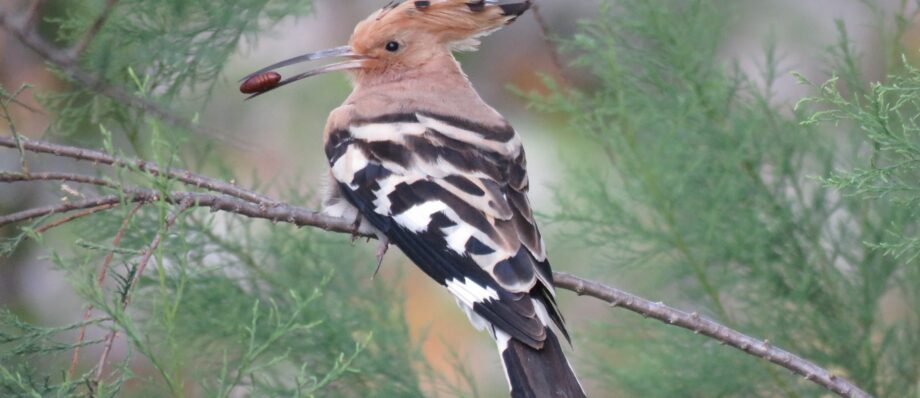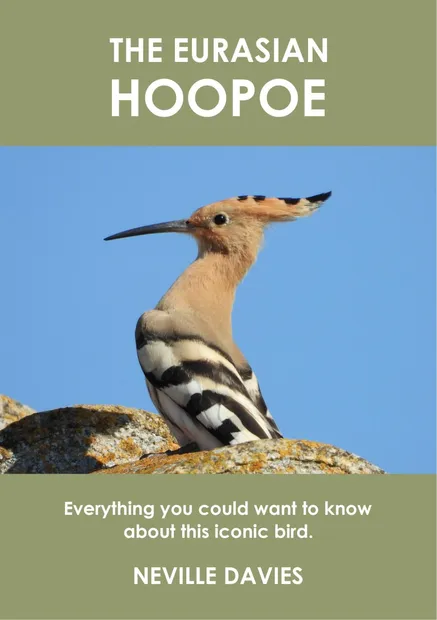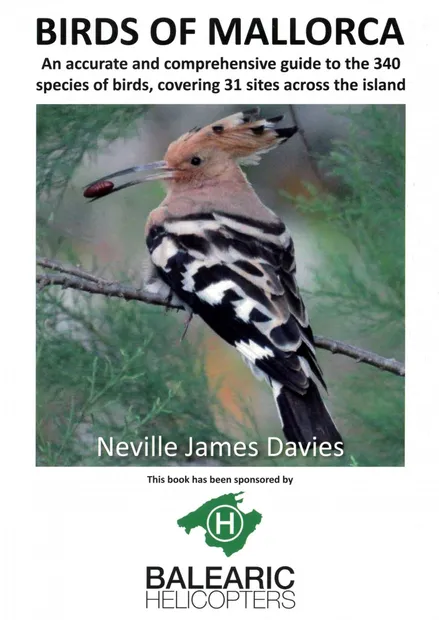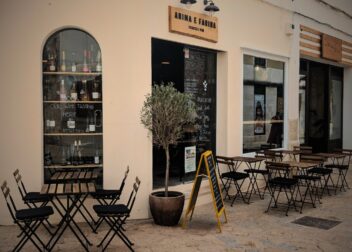The Wild North: The Hoopoe
- 12 September 2024
- Things to do, Activities, Lifestyle, Uncategorized
- 7 mins read
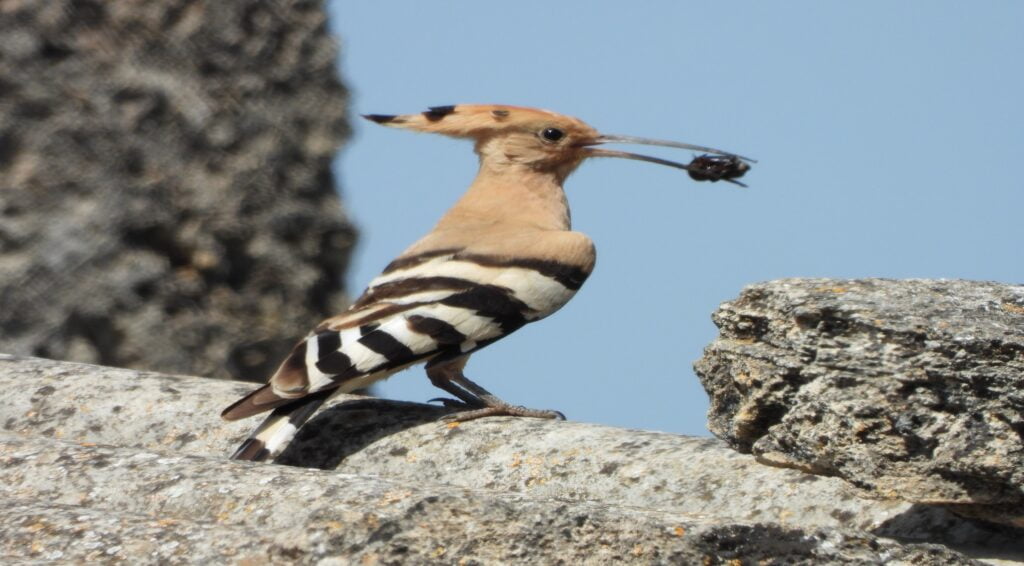
How My Love for the Hoopoe Began
I can sum up in two words why I first visited Mallorca back in 1990 – the Hoopoe. I had grown up seeing this iconic bird in books and always wished to see one in real life. I thought it was a bird from some far-off destination that I’d never be able to visit, but I was wrong. I came across a birding guidebook for Mallorca by the late Graham Hearl, who at the time was the RSPB bird representative for the island, and his book showed the Hoopoe as a ‘common resident breeder’. My late father (John), who was also a keen birdwatcher, discussed going out there one spring and inspired further by others who had visited Mallorca and their accounts of the varied landscape, high mountains and some of the spectacular birds on offer, we decided that now was the time.
So the following May we were off, staying in Puerto Pollensa and with a hire car, we were going to visit many of the northern sites that week. In fact, this first week saw me amassing an impressive 50 new bird species for my list. Unfortunately the Hoopoe was not included, and three days in we still hadn’t seen one, despite it apparently being a common resident breeder. I was beginning to think I was never going to see one, but that afternoon on a local walk in Siller, there was one flying low across an open field. I was delighted; to say I punched the air in delight would not be an exaggeration. I had finally seen a Hoopoe – and it looked as magical in real life as it had for so many years in the books. We saw two more that afternoon and several every day thereafter, even seeing the characteristic plume of ‘punk rocker’ style feathers that protrude upwards on the head when the bird lands. Even to this day, having visited Mallorca several times a year annually since 1990, and seeing hundreds of Hoopoes in that time, each one still makes me stop to watch it as if it was my first. I will never tire of seeing this amazing bird.
About the Hoopoe
My book all about the Eurasian Hoopoe was inspired mainly by those seen on Mallorca. But let us learn a bit more about this wonderful bird. Did you know for example one was recorded flying at an altitude of 26,000 ft in the Himalayas, they will eat frogs and small reptiles as well as their normal insect food, they are a sacred bird in Egypt, and there is a record of a WW2 fighter ace who named his plane the Hoopoe.
The Eurasian Hoopoe (Upupa epops) is the most widespread species of the genus Upupa native to Europe, Asia and the northern half of Africa. There are nine sub-species across the range. An iconic and medium-sized bird, they have a muscular head which allows the bill to be opened when probing inside the soil for food. They are a relatively tame bird and the use of inhabited buildings and being close to humans reflects this to a certain extent. However, in areas where it is persecuted it is understandably very shy and wary. The crest conveys the shifting mood of the Hoopoe – held closed when relaxed and fanned when excited or frightened.

S’ Amarador, Muro. May 2023 ©Neville Davies
I took this picture on a glorious day exploring the S’ Amarador area, with this individual perched on the roof of a small out building. I walked slowly along the rough track stopping to take some pictures in case it flew off, edging closer and getting another shot. When I got closer still, it raised its body up into an upright position, watching me intently and perhaps trying to give the impression of being larger than what it actually was. Either way it allowed me to capture this wonderful picture.
Although monogamous (having only one mate at a time) they have been known to be very aggressive causing lethal injury to other males and even females in their territory. Although insects form the bulk of their prey they will readily take small reptiles and amphibians and surprisingly even consume plant material. At their nest site they adopt an aggressive defence strategy producing a foul-smelling liquid, and even at six days old the fledgling can direct streams of faeces at any intruder with remarkable aim. In France they are known as ‘huppee‘. The Hoopoe is mentioned in the Quran and is sacred in Egypt where they have been depicted on the walls of tombs and temples. But elsewhere the Hoopoe is seen in a different light. For example, in years gone by in Scandinavia people saw the Hoopoe as harbingers of war . In Estonia they are believed to foreshadow death for many people.
The black and white markings on the wings stand out against the fawn-coloured body. But it is when they land that I particularly like seeing the crest of head feathers suddenly standing to attention as if to say, ‘look at me‘. There is just something magical about the Hoopoe and whatever it may be doing at the time it seems to command your attention. It is safe for me to say I would never get tired of seeing Hoopoes – they make a lasting impression on any walk and are always a welcome addition to a day list.
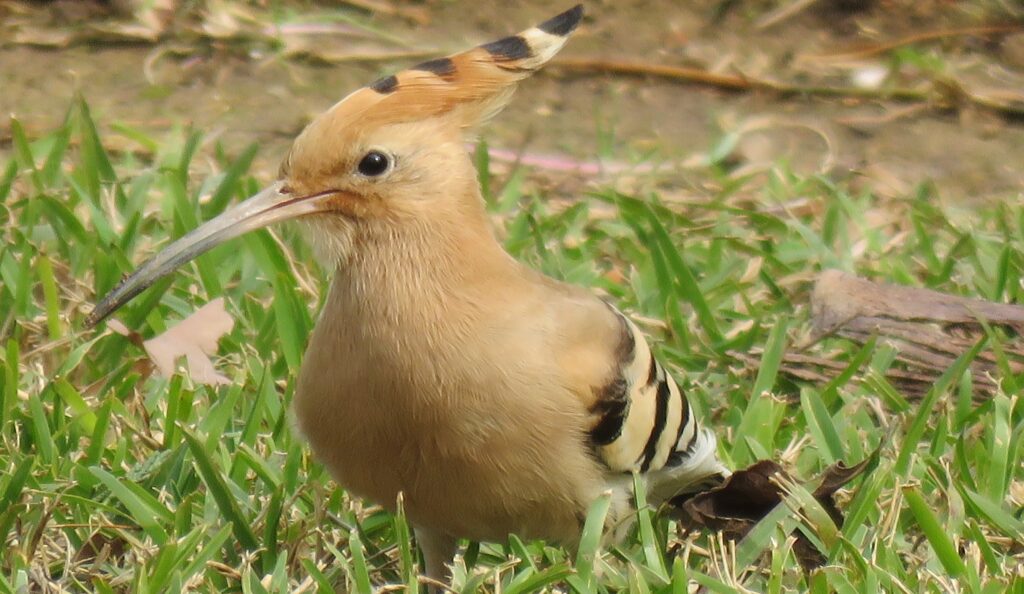
The genus name mimics the Hoopoes song and the specific name has a Greek origin. The first syllable ‘epi’ means ‘over’ or ‘above’. ‘Ops’ is the Greek word for an eye. The word ‘epops’ however has a bit of uncertainty but may be in reference to being reminiscent of the crested helmet of a guardsman? Their call is typically a trisyllabic oop-oop-oop which may give rise to its English and scientific names.
The Hoopoe is a medium-sized bird 26-28cm long with a 42-46cm wingspan. It weighs 47-87g, similar in size to the Eurasian Jay (Garullus glandarius). The adults head, neck, back and underbody are a pale brownish pink with a warmer pinkish shade on the breast. A long erectile crest of pink feathers tipped with white and black show whenever the bird lands and sometimes when they are feeding on the ground. There is a white crescent on the rump.
At rest they show a transverse black and creamy-white barring which crosses the wings and shoulders with the foremost bar being a pale orange. The tail is black with a wavy white band near the base. The undertail coverts are whitish. In flight the primaries are black with single white crescents near the tips. The bill is long and decurved, black and with a pinkish base. The legs and feet are entirely black. The juvenile is a duller colour than the adult with dingy cream barring and a shorter tail.
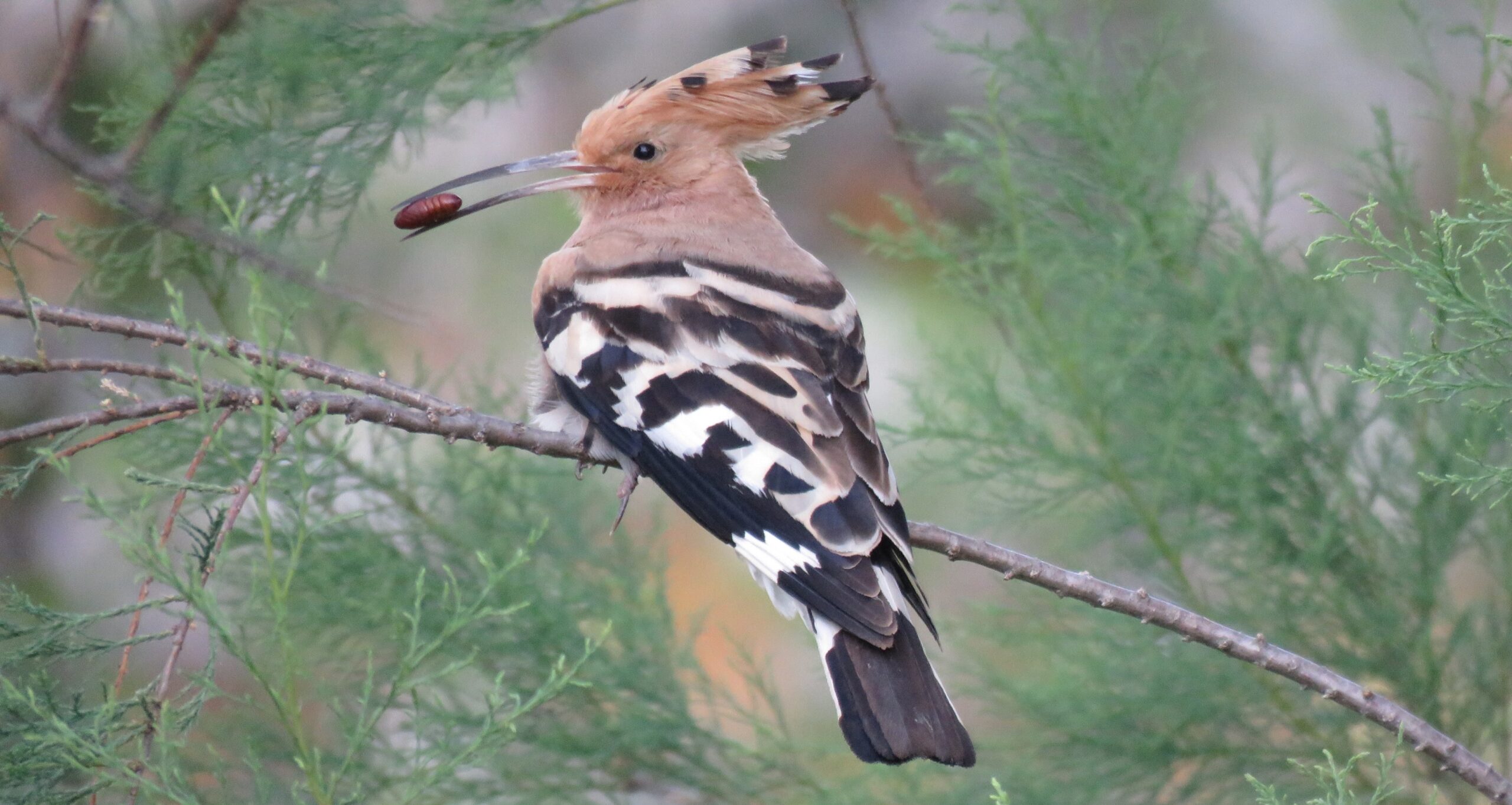
Son Bosc, 2023 © Neville Davies
This picture was a special moment. I was around the Son Bosc area near the waterworks, which is a reliable site to see the Hoopoe. As I drove slowly along the narrow road a Hoopoe carrying what looked to be a larvae (possibly of a Mole Cricket) flew across the road and landed on the edge of a low pine. I stopped the car and moved very slowly forward, expecting it to fly off at any moment. Thankfully it stayed stock still keeping a wary eye on me. Between me and the bird was a wire fence, and I had to poke the camera lens through the gap, again expecting the bird to fly off. But as there was no doubt young close by, it stayed put allowing me to get this wonderful picture. Unfortunately someone else was using the road so I had to move my vehicle, but for those few moments with this close encounter it was magical. Did I mention I like the Hoopoe?
Although the species may be in decline, my hope is that by reading my book some people may be inspired to help the Hoopoe – whether that be joining a group such as CABS (Campaign Against Bird Slaughter), helping to preserve their habitat or doing whatever they can to support this great bird. A world without the Hoopoe would be a very different place and I for one sincerely hope that this never becomes a reality.
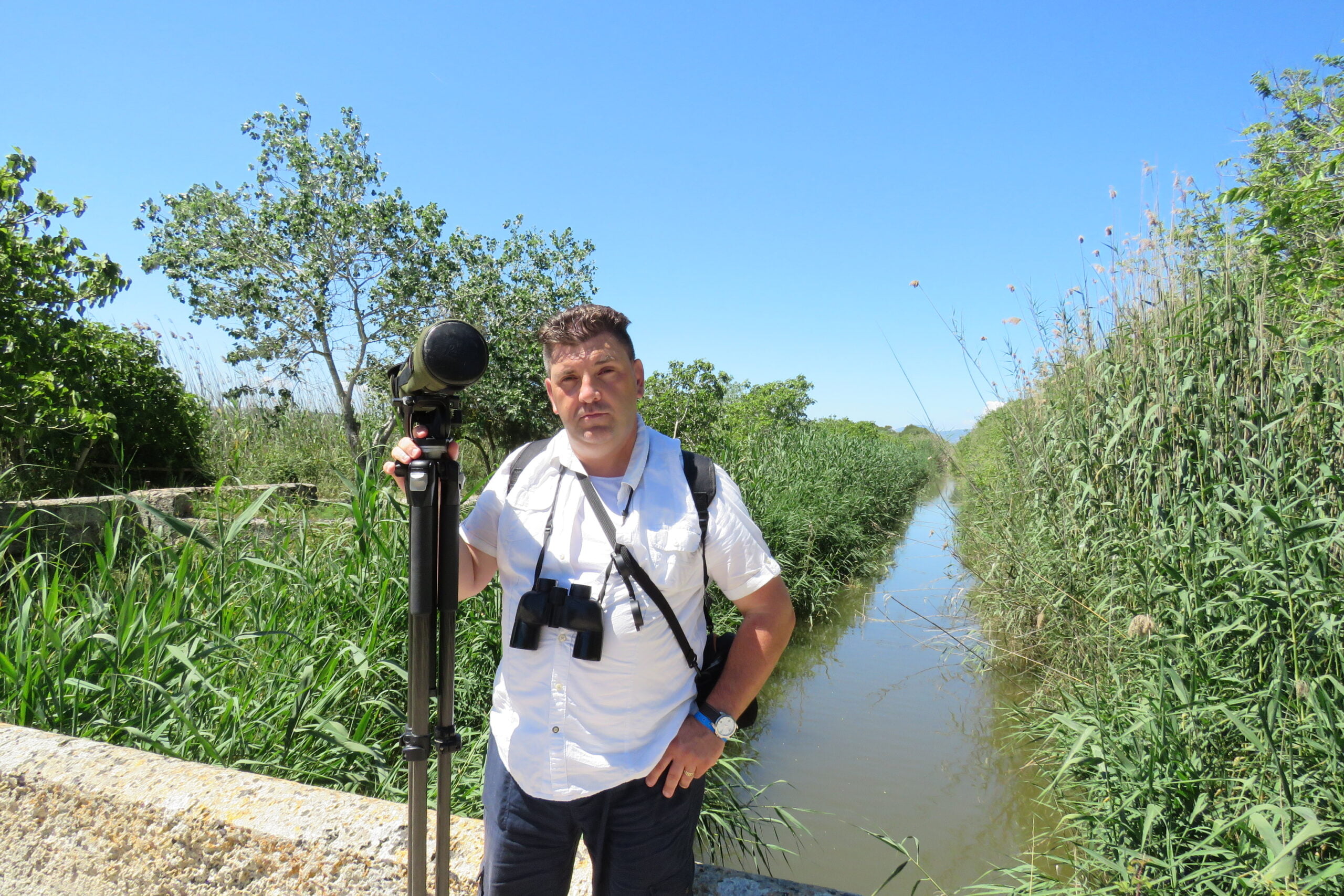
Neville Davies Writer of The Wild North
Neville is the author of two books. One entitled The Eurasian Hoopoe the other, a field guide to Birds of Mallorca. See the links below.

